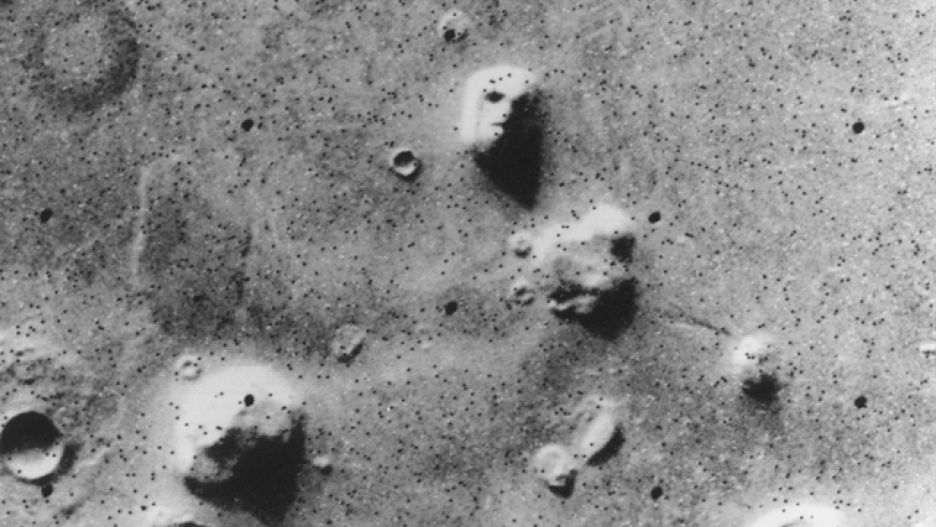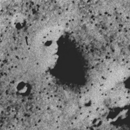Europe Space Probe Reframes Mars 'face'
Associated Press
Sun September 24, 2006
BERLIN -- For decades, photos of a huge, face-shaped rock formation on Mars sparked thoughts of intelligent life - or even a statue of Elvis on the Red Planet. But now the European Space Agency has unmasked the face - as not really a face at all.
The "face," first photographed by NASA's Viking 1 orbiter more than 30 years ago, vanishes in new, higher-resolution photos sent back by the European Space Agency's Mars Express orbiter.
The clearer picture was taken by the high-resolution stereo camera on Mars Express after multiple attempts to photograph the raised area in the Cydonia region between April 2004 and July 2006 were hampered by red dust, haze and altitude.
"Each point on the picture has a resolution of about 13.5 meters and you can see a lot of features that you couldn't see before," said Michael McKay, former flight operations director of Mars Express based at ESA's Spacecraft Operations Centre in Darmstadt, Germany.
"The fantastic benefit of the European high resolution camera is that we actually take one picture but we can create three-dimensional images from it and we can look at it from any position, any angle."
The 'face on mars' photos that fired the imagination of fans of space myths the world over were first taken 30 years ago when NASA's Viking 1 orbiter spotted the Martian landform in the shape of a head measuring nearly two miles from end to end.
In 1998 and 2001, new, sharper pictures of the region were taken by NASA's Mars Global Surveyor and revealed simply a rugged landform rather than a supposed alien monument. But that didn't halt public speculation.
The so-called Martian mesas are still interesting for planetary geologists. McKay said the photos can help analyze the geological processes that were at work to create the Cydonia region.





 Share your thoughts in the Forum
Share your thoughts in the Forum
